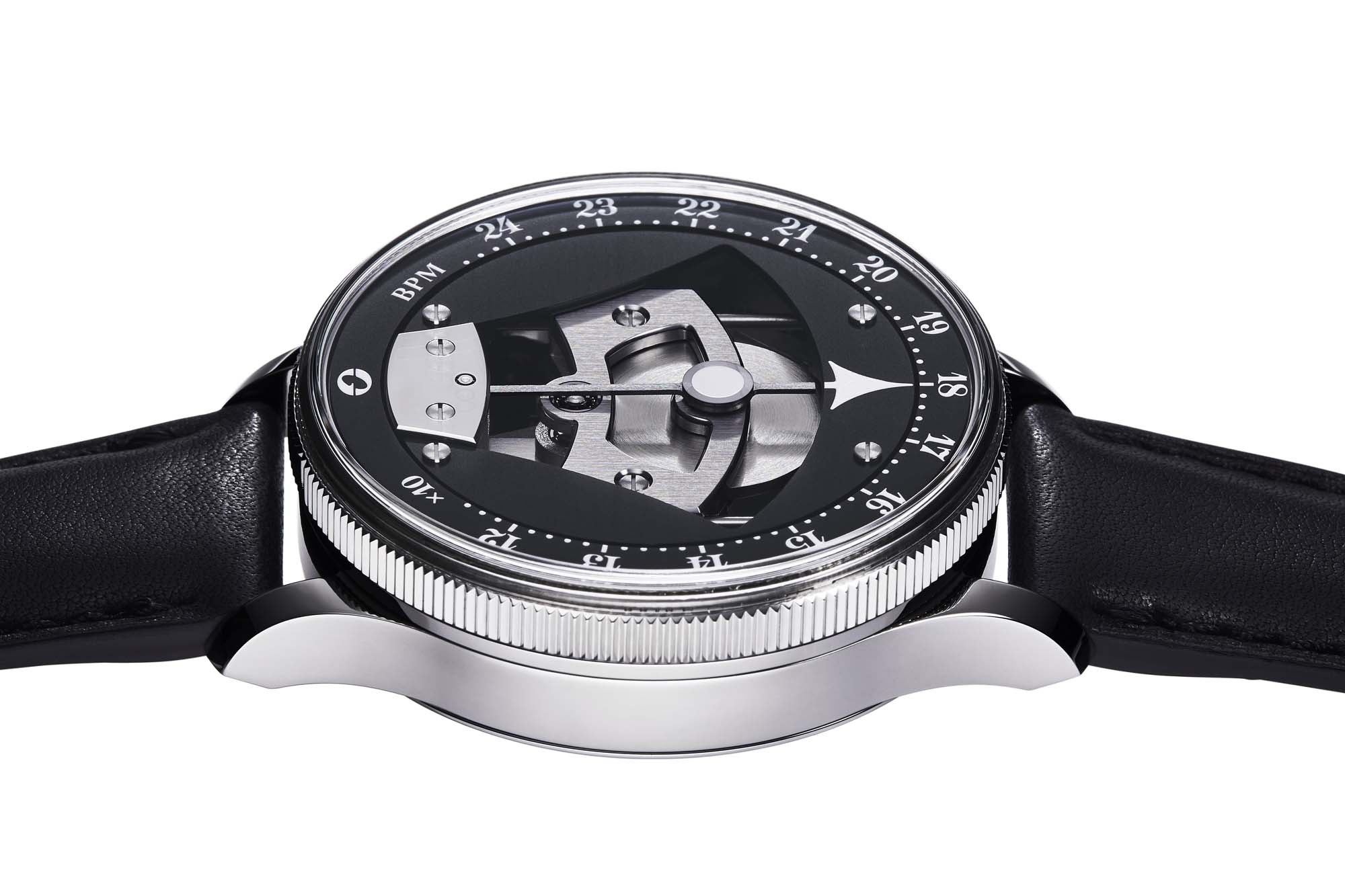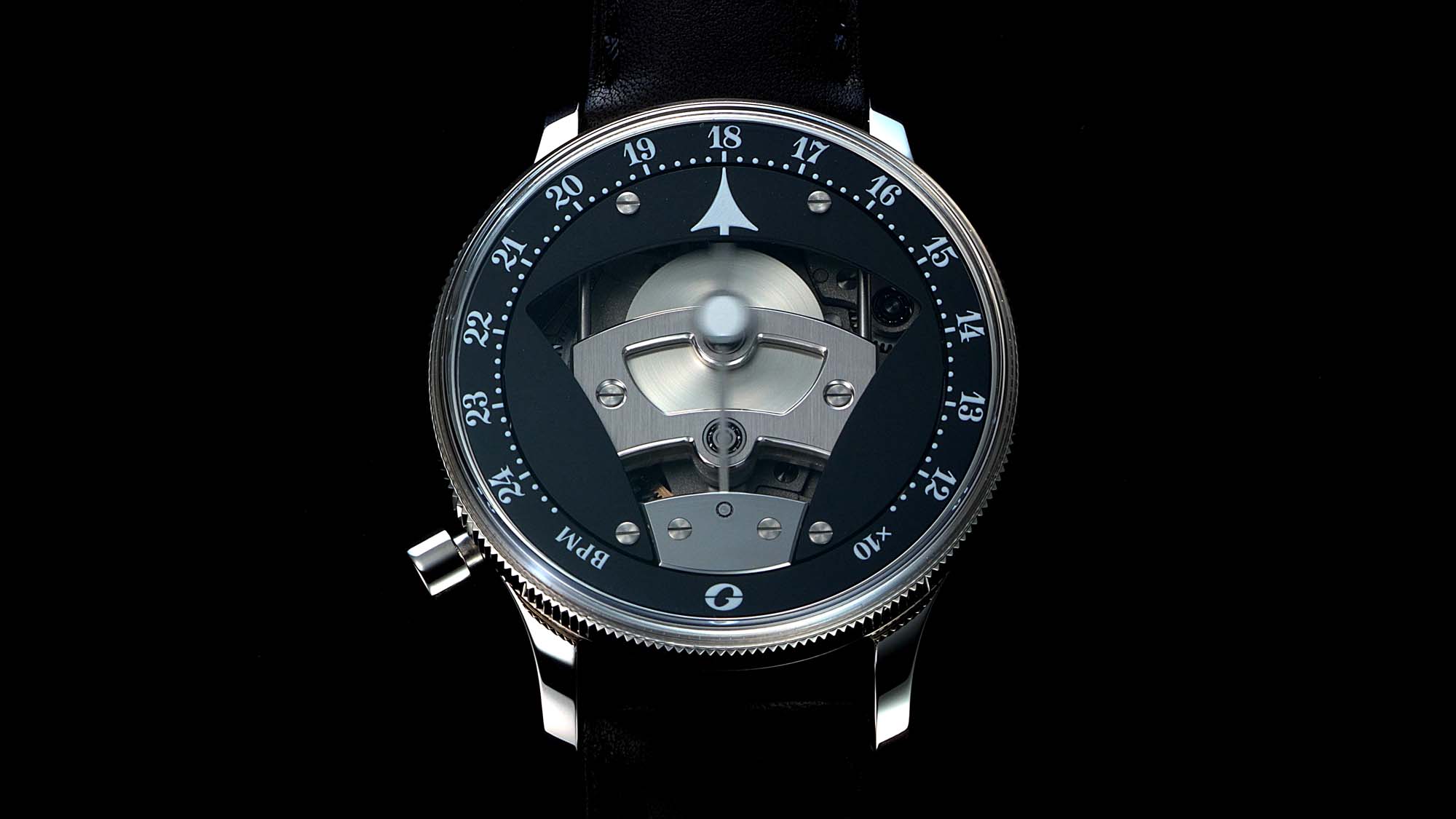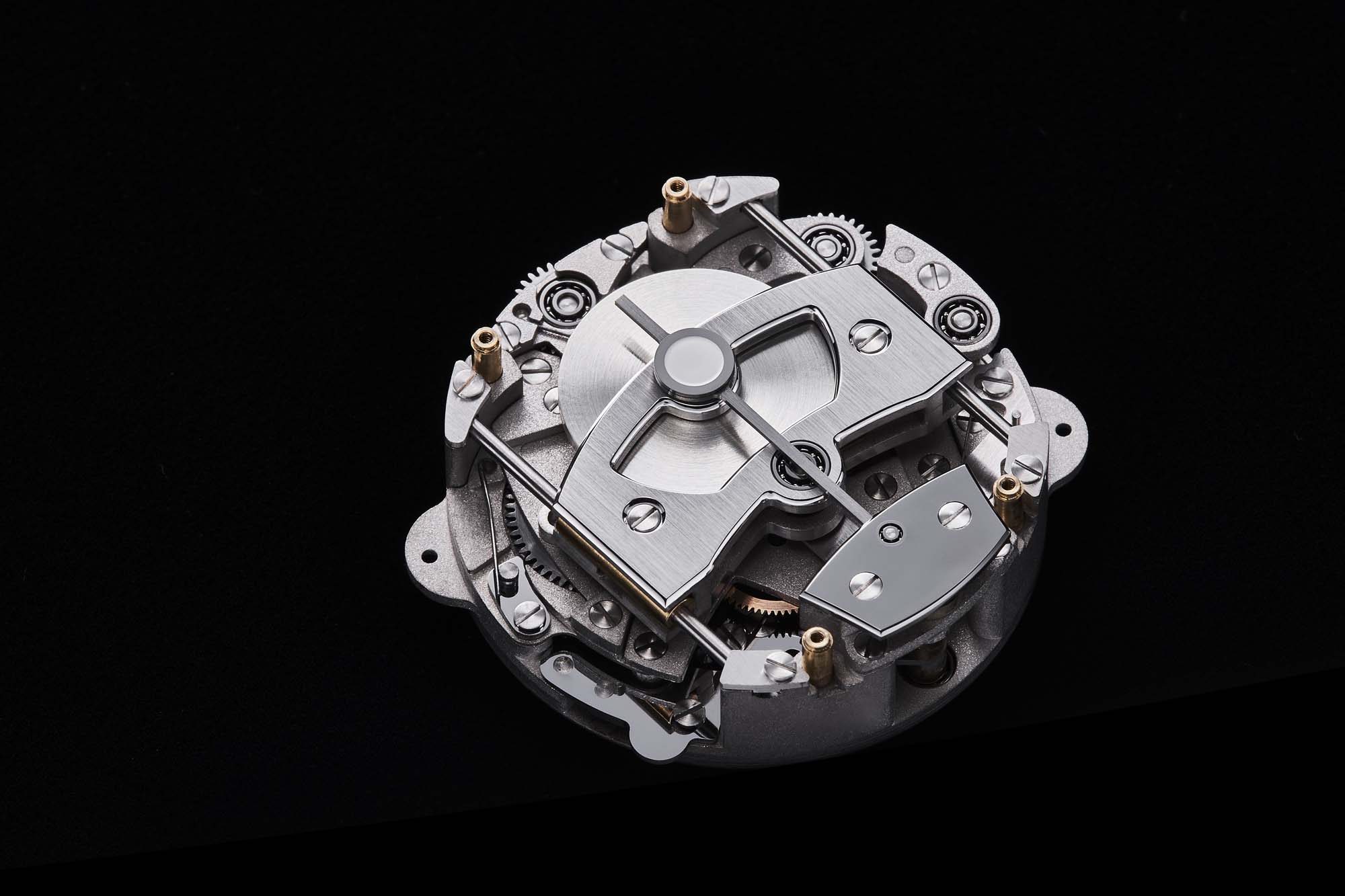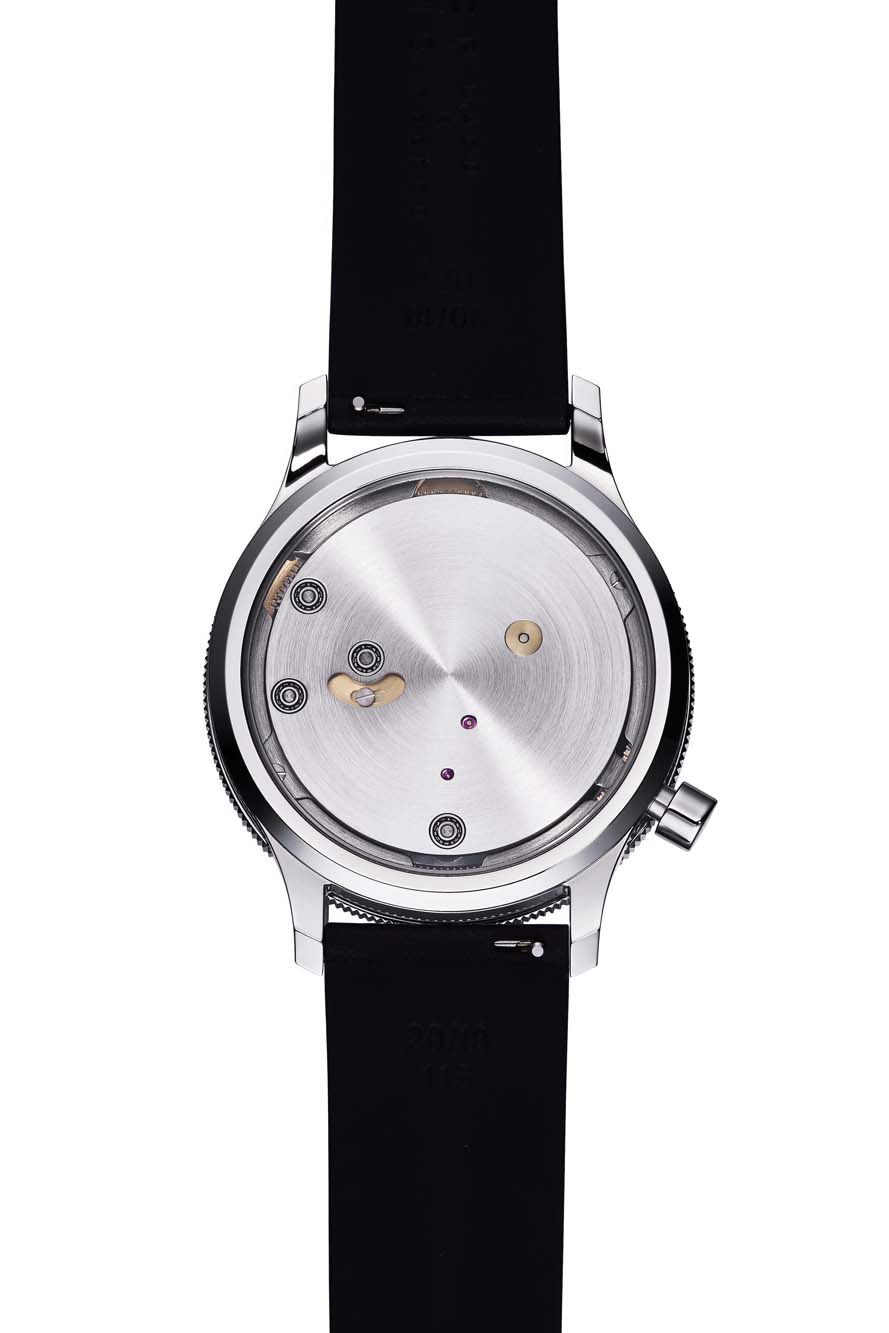The conception of the Tempo Rubato is a fascinating tale of inspiration, perseverance, and innovative thinking. It’s a story that begins not in the workshops of Switzerland, but in the jazz clubs of Tokyo, where the rhythmic beats of drums and the precise ticking of watches found an unexpected harmony.
Gaku Okada, the young watchmaking apprentice behind the Tempo Rubato, embodies the spirit of innovation that drives the watchmaking industry forward. Born in 2002 in Hokkaido, Japan, Okada’s journey into the world of horology began with an unexpected twist. Unlike many in the field who grew up surrounded by timepieces, Okada’s path was paved with musical notes and the rhythmic beats of jazz drums.
The Genesis of an Idea
From the moment Gaku Okada stepped into his first watchmaking class, a seed of an idea began to germinate in his mind. As he learned about the intricate mechanisms that power mechanical timepieces, he couldn’t help but draw parallels to the complex rhythms and timing of jazz music. The precision required in both fields, the importance of each component working in perfect synchronization, and the artistry involved in creating something both functional and beautiful – these similarities were not lost on the young apprentice.
It was during his freshman year at the Hiko Mizuno College of Jewelry that Okada first envisioned the concept of a mechanical wrist-metronome. The idea was born out of a practical need – as a jazz drummer, Okada often found himself wishing for a way to quickly and accurately determine the tempo before a performance. While electronic metronomes existed, they lacked the soul and craftsmanship of a mechanical device. Moreover, the idea of combining this functionality with the artistry of watchmaking presented an irresistible challenge.
Recognizing the value of practical experience, he sought out opportunities to work alongside established names in the industry. His dedication and talent caught the attention of renowned watchmakers Hajime Asaoka and Jiro Katayama of Otsuka Lotec. Under their guidance, Okada honed his skills, gaining insights into design principles and conceptual thinking.
However, turning this vision into reality was no small feat. For three years, Okada nurtured this idea, allowing it to evolve and mature as he gained more knowledge and experience in watchmaking. He spent countless hours sketching designs, researching mechanisms, and contemplating how to overcome the technical challenges that such a device would present.
The breakthrough came when Okada began to see the project not just as a watch or a metronome, but as a bridge between his two passions. He realized that by approaching the design from both a horological and a musical perspective, he could create something truly unique. This epiphany led him to explore innovative solutions that traditional watchmaking alone might not have yielded.
Overcoming Technical Challenges
One of the key challenges Okada faced was how to create a mechanism that could produce a consistent, adjustable beat while maintaining the compact (39mm case) size of a wristwatch. Drawing inspiration from the escapement mechanisms in traditional timepieces, Okada began to experiment with modified designs that could serve the dual purpose of timekeeping and beat-keeping.
Another crucial aspect was the user interface. Okada wanted to create a device that was not only functional but also intuitive for musicians to use. This led to the development of the unique bezel system, which allows for easy adjustment of the tempo, even while the metronome is in operation.
At its core, the Tempo Rubato is a mechanical metronome designed to be worn on the wrist. Its primary function is to provide musicians with an accurate tempo reference before and during performances. The name “Tempo Rubato” itself is a nod to the device’s musical roots. In music, “tempo rubato” refers to the expressive and rhythmic freedom by a slight speeding up and then slowing down of the tempo. This perfectly encapsulates the essence of the device – a tool that allows musicians to set and adjust tempo with precision and flexibility.
The device features a push-button at the 8 o’clock position that starts and stops the metronome function. This simple yet effective interface allows for quick and easy operation, even in the midst of a performance.
The tempo, measured in Beats Per Minute (BPM), can be adjusted by rotating the bezel. Clockwise rotation increases the BPM and also winds the mainspring, while counterclockwise rotation decreases the BPM. This intuitive system allows for seamless adjustments, with both directions featuring end stops to prevent over-rotation.
View this post on Instagram
One of the most impressive features of the Tempo Rubato is its ability to adjust the BPM even while the metronome is in operation. This allows musicians to fine-tune the tempo on the fly, adapting to the nuances of a live performance.
The Movement: Caliber TempoRubato
The heart of the Tempo Rubato movement is its custom-designed escapement. This mechanism, specifically created for this device, ensures that the pallet fork’s oscillations maintain a uniform amplitude. This is crucial for maintaining accurate tempo across different BPM settings.
It features 5 jewels and 15 ball bearings, an unusual combination in the world of horology. The use of ball bearings, particularly in high-stress areas like the winding mechanism and BPM adjustment components, allows for smoother operation and increased durability.
The power reserve of approximately 30 minutes might seem short compared to traditional watches, but it’s more than sufficient for its intended use as a pre-performance tempo setter or short-term rhythm keeper. After all this is a mechanical metronome, and not a traditional timekeeping device.
The movement operates at a variable frequency of 7,200 to 14,400 vibrations per hour, corresponding to a range of 120 to 240 BPM. This wide range allows the Tempo Rubato to cater to various musical styles and tempos, from slow ballads to up-tempo jazz numbers.
The Escapement: A New Beat
The escapement of the Tempo Rubato is perhaps its most innovative component. Designed specifically for this device, it features uniquely shaped escape wheel teeth and pallet fork jewels. This custom design ensures that the pallet fork’s oscillations maintain a uniform amplitude, crucial for keeping an accurate and consistent tempo.
The escapement is connected to a slotted lever attached to the pallet fork’s pivot. This lever moves a counterweight from side to side, creating the visual and audible ‘tick’ that marks each beat. The precision of this mechanism is what allows the Tempo Rubato to function as an accurate metronome, maintaining its beat even under the varying conditions a wrist-worn device might encounter.
The Regulator: Fine-Tuning the Rhythm
The regulator mechanism of the Tempo Rubato is another area where Okada’s innovative thinking shines. Unlike traditional watch regulators that adjust the rate of timekeeping, this regulator is designed to adjust the tempo of the metronome.
The regulator consists of a carriage that can be moved up and down by rotating the bezel. This movement changes the effective length of the counterweight’s arm, thereby altering the period of its oscillation. It’s a clever adaptation of principles used in pendulum clocks, applied here in a novel way to create an adjustable metronome.
The Winding Mechanism: Powering the Beat
The winding mechanism of the Tempo Rubato is integrated with its BPM adjustment system in an ingenious way. Rotating the bezel clockwise not only increases the BPM but also winds the mainspring. This dual-purpose action ensures that adjusting the tempo also maintains the power reserve, a thoughtful design choice that enhances the device’s usability.
The mainspring barrel and second wheel are sourced from the ETA 7750 movement, a reliable and well-respected caliber in the watchmaking world. This choice of components speaks to Okada’s pragmatic approach, combining custom-designed elements with proven parts to create a reliable and efficient mechanism.
Ball Bearings: A Rolling Revolution
The use of ball bearings in the Tempo Rubato is one of its most distinctive features. In total, 15 ball bearings are used throughout the movement, all manufactured by MinebeaMitsumi, a company known for its high-precision components.
The larger 3mm ball bearings are used in high-stress areas: three in the regulator, two in the winding mechanism, two on the pallet fork pivot, and six in the BPM adjustment components. These bearings allow for thicker, more robust pivots that can withstand the direct force applied when adjusting the bezel.
The smaller 1.5mm ball bearings are used on the upper and lower pivots of the hands. This unusual choice was made to address the unique challenges posed by the Tempo Rubato’s design. Unlike in a typical watch, these pivots are subjected to direct torque from the pallet fork. The ball bearings minimize lateral pivot deviation, ensuring smooth and accurate movement of the hands.
Assembly and Maintenance
One of the interesting aspects of the Tempo Rubato’s design is its focus on ease of assembly and maintenance. Okada designed the movement so that each component could be press-fitted into place without requiring further fastening or adjustments. This not only simplifies the assembly process but also makes future servicing and repairs more straightforward.
Potential Impact on Music Education
Beyond its applications for professional musicians, the Tempo Rubato has potential implications for music education. For students learning to keep time or understand different tempos, having a wearable device that provides both audible and visual tempo cues could be invaluable.
The interactive nature of adjusting the tempo via the bezel could also help students develop a more intuitive understanding of tempo changes and how they affect the feel of a piece of music.
For composers and arrangers, the Tempo Rubato offers a unique way to experiment with tempos. The ability to quickly and precisely adjust BPM could aid in the creative process, allowing for easy exploration of how different tempos affect the mood and energy of a composition.
While the Tempo Rubato offers numerous benefits, it’s worth considering potential challenges. The limited power reserve of 30 minutes means it’s primarily suited for short-term use or as a pre-performance tempo setter. Musicians relying on it for longer performances would need to be mindful of winding it regularly.
The Tempo Rubato represents a fascinating intersection of horology and musicianship. By addressing a specific need in the world of live music performance, Gaku Okada has created a device that not only showcases innovative watchmaking but also has the potential to enhance musical performances and education.
The genesis of the Tempo Rubato serves as an inspiring example of how cross-disciplinary thinking can lead to groundbreaking innovations. It reminds us that sometimes, the most revolutionary ideas come not from within an industry, but from the fresh perspective of someone who dares to think differently.
You can follow Gaku Okada and see more images and video footage of the Tempo Rubato in action on Instagram here.










